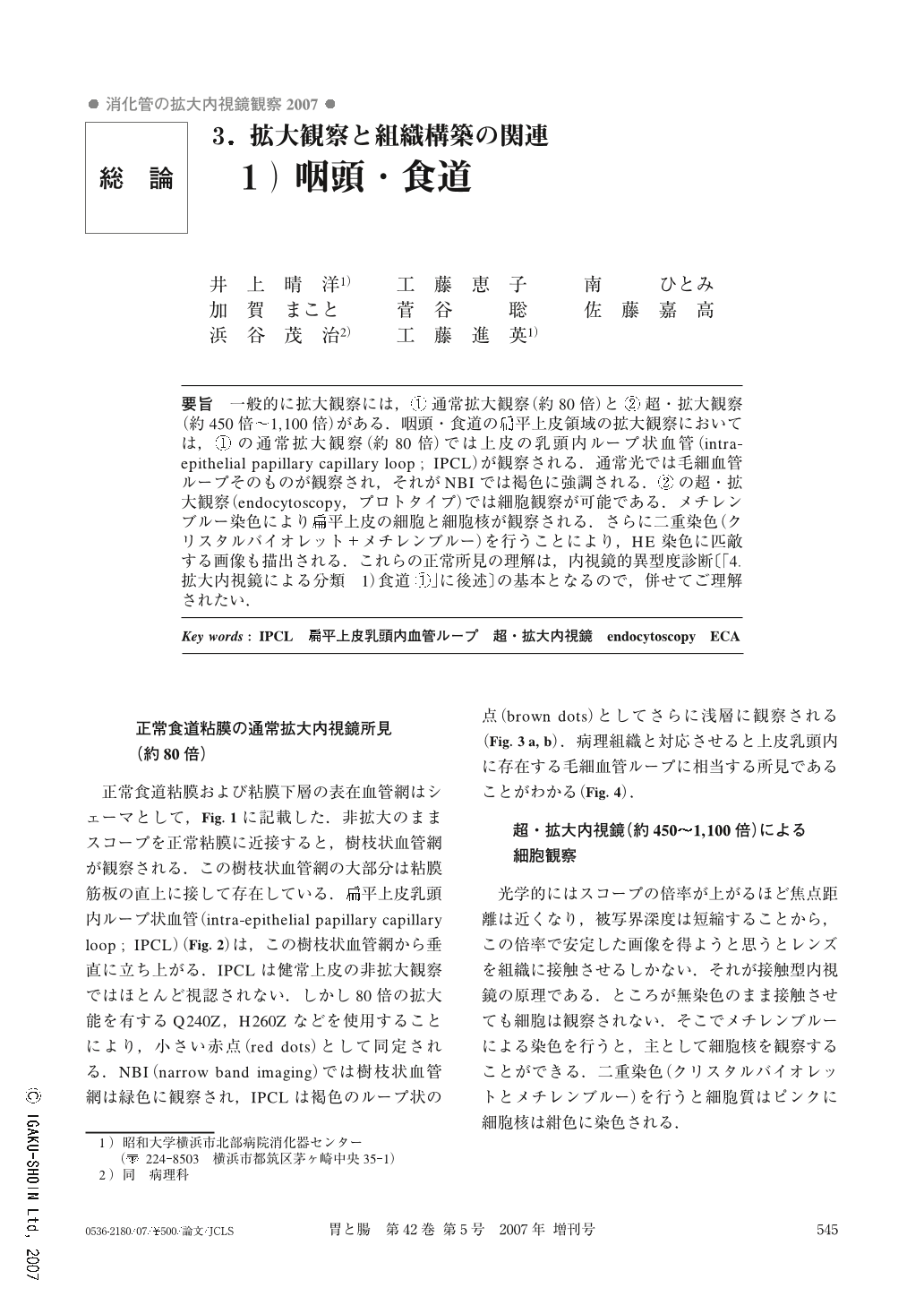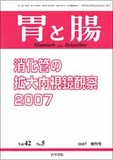Japanese
English
- 有料閲覧
- Abstract 文献概要
- 1ページ目 Look Inside
- 参考文献 Reference
- サイト内被引用 Cited by
要旨 一般的に拡大観察には,①通常拡大観察(約80倍)と②超・拡大観察(約450倍~1,100倍)がある.咽頭・食道の扁平上皮領域の拡大観察においては,①の通常拡大観察(約80倍)では上皮の乳頭内ループ状血管(intra-epithelial papillary capillary loop;IPCL)が観察される.通常光では毛細血管ループそのものが観察され,それがNBIでは褐色に強調される.②の超・拡大観察(endocytoscopy,プロトタイプ)では細胞観察が可能である.メチレンブルー染色により扁平上皮の細胞と細胞核が観察される.さらに二重染色(クリスタルバイオレット+メチレンブルー)を行うことにより,HE染色に匹敵する画像も描出される.これらの正常所見の理解は,内視鏡的異型度診断〔「4.拡大内視鏡による分類 1」食道①」に後述〕の基本となるので,併せてご理解されたい.
Magnification endoscopy involves two categories. Standard magnifying endoscopy has approximately 80-fold magnification power which enables the observation of IPCL (intra-epithelial papillary capillary loop) in the pharynx and esophagus. IPCL is further emphasized with NBI imaging technology. Another category is ultra-high magnification endoscopy with around 500-fold magnification which enables the observation of cellular-level structures by contacting the target tissue surface. It is called endocytoscopy. In endocytoscopy, the cell nucleus is well demonstrated by staining with methylene blue. A newly developed double-staining technique also enables the observation of cellular structure as a well-contrasted image which is similar to that prodused by Hematoxylin & Eosin staining.
The magnifying observations mentioned above hare already been enrolled as a part of regular endoscopic observation.

Copyright © 2007, Igaku-Shoin Ltd. All rights reserved.


